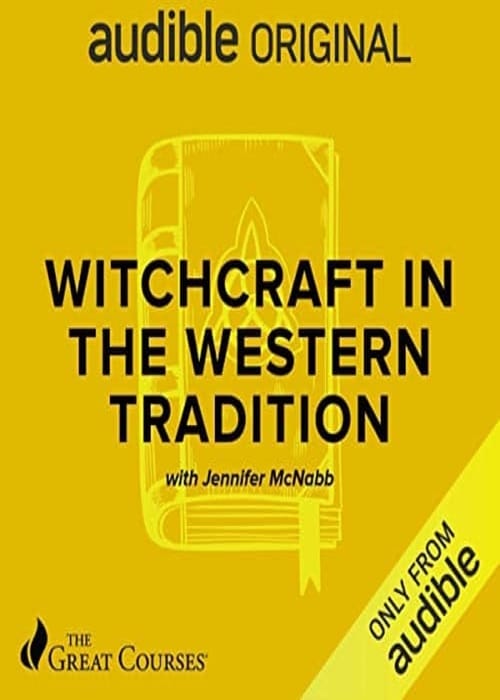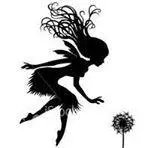Please scroll down for an English review.
ספר עיון היסטורי שעוסק בהתפתחות הכישוף וצייד המכשפות באירופה וארה"ב החל מהמאה ה -15 ועד המאה ה-21. קראתי אותו במסגרת הקורסים שאני קוראת ומקשיבה להם של Great Corses. באופן מאכזב ביותר, לא נלווה לאודיו PDF שמאפשר מעקב אחרי הנרטיב או אפילו מספק את הקישורים וההפניות לדוגמאות שהיא נותנת. לכן נאלצתי להקשיב לקורס פעמיים בכדי לגבש את הדעה שלי.
הספר מבטיח 10 הרצאות שחוקרות את מקור הרדיפה של הכישוף תוך הצגת הגורמים התרבותיים, הכלכליים, הדתיים והחברתיים שתרמו לרדיפה. יחד עם זאת, אני חושבת שהספר לא מיצה את מלוא הפוטנציאל שלו ולא היה מתודולוגי מספיק. לדוגמא היא לא מחדשת בתחומים של נסיבות הרדיפה ולטעמי אין מספיק התעמקות בנסיבות שדווקא בתקופת הרנסנס, במאה ה 15, הרדיפה זוכה לתהודה ותאוצה. היא גם לא קושרת את התופעה מספיק לרפורמציה ולקונטרפורמציה שהתחוללה בנצרות בשנים אלה.
המחברת, טוענת שלמעשה מספר בני האדם שהוצאו להורג כתוצאה מכישוף נמוך מהמספרים וההערכות שהציבור מכיר. היא טוענת שהתקופות שהעידן המודרני זוכר, הן תקופות של קדחת רדיפה ושיש תקופות ואיזורים שבהם רבים מהנאשמים זוכו, שרדו ולא הוצאו להורג. בספר אין הסבר לשונות הזו בין האיזורים השונים ויתכן שהיא צודקת לחלוטין, אבל הרגשתי לא מסופקת לנוכח חוסר המידע שמסביר את הפערים בין התקופות ובין האיזורים השונים באירופה.
בנוסף, המחברת מתעלמת מהעובדה שבזיכרון ההיסטורי הקולקטיבי הרג המכשפות נחקק בגלל מספר סיבות והראשונה היא העובדה שכישוף כרורך במסתורין, בעיסוק בדברים לא ידועים ונעלמים שמאתגרים ומסקרנים את הציבור. הוא גם נחקק בתודעה הקולקטיבית בגלל האכזריות של שיטות ההרג של המכשפות (העלאה על המוקד ושריפה בעודן הן בחיים). והיא גם מתעלמת מהעובדה שהרג המכשפות מסמל את ההגמוניה של הפטריאכיה, שילטון הגברים והדת.
אם לא ידעתם, מסתבר שכישוף היה עיסוק נשי וכך האישום בעיסוק בכישוף הפך תלוי מגדר ומין. 80 אחוז מהנאשמות בכישוף היו נשים, אבל יצויין שגם גברים הואשמו בעיסוק בכישוף וגם הם נרדפו.
סה"כ מדובר בסידרת הרצאות מעניינת, מיועדת למתחילים שאין להם רקע היסטורי, לטעמי לא מספיק מעמיקה.
Witchcraft in the Western Tradition/ Jennifer McNabb
Audio Edition, 5H 11M, 2020
דירוג SIVI –
איכות אודיו –

A historical non-fiction book that deals with the development of witchcraft and witch hunting in Europe and the USA from the 15th century to the 21st century. I read it as part of the Great Courses courses I read and listen to. Most disappointingly, no accompanying PDF to the audio allows you to follow the narrative or even provides the links and references to the examples she gives, so I had to listen to the course twice to form my opinion.
The book, with its promise of 10 lectures that delve into the origin of the persecution of witchcraft, presents a hopeful potential. It aims to present the cultural, economic, religious, and social factors contributing to the persecution. However, it falls short of its full potential and needs more methodological depth. For instance, it fails to provide innovative insights into the circumstances of the persecution, and there is a lack of depth in the discussion of the circumstances during the Renaissance. It also needs to sufficiently connect the phenomenon to the reformation and counter-formation in Christianity during these years.
The author argues that the number of people executed as a result of witchcraft is lower than commonly believed. She points out that the modern era tends to remember periods of feverish persecution, but there were also periods and areas where many of the accused were acquitted, survived, and were not executed. However, the book does not explain this difference between regions, which may leave some readers feeling unsatisfied.
Furthermore, the author's perspective is a key aspect that engages the reader. She overlooks the fact that in the collective historical memory, the killing of witches was enacted for several reasons. The first reason being the mystery surrounding witchcraft, dealing with unknown and invisible things that challenge and intrigue the public. The second reason is the brutality of the witches' killing methods, which were enacted in the collective consciousness. She also ignores the fact that killing the witches symbolizes the hegemony of patriarchy, male rule, and religion.
It is revealed that witchcraft was predominantly associated with women, and thus, the accusation of practicing witchcraft became heavily dependent on gender and sex. The book notes that 80 percent of those accused of witchcraft were women. However, it also acknowledges that men were also accused of practicing witchcraft and were also persecuted, albeit to a lesser extent.
Overall, this series of lectures is designed for beginners who do not have a historical background. It is an inclusive resource for those who are new to the topic. However, in my view, it lacks the necessary depth for a more seasoned audience.
לגלות עוד מהאתר Sivi's Books
Subscribe to get the latest posts sent to your email.

